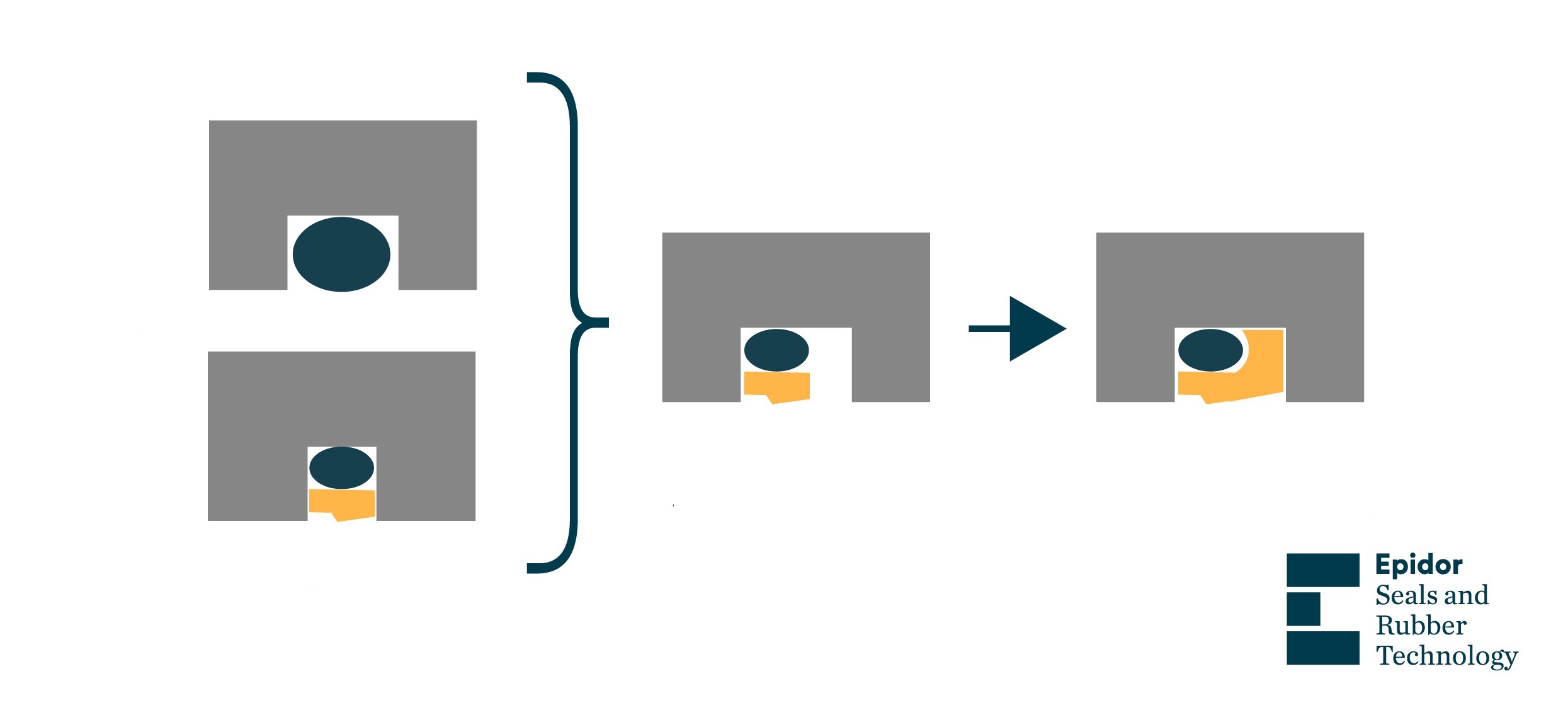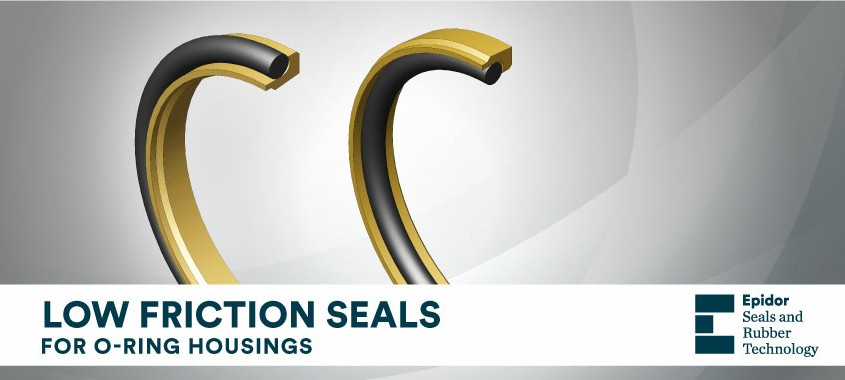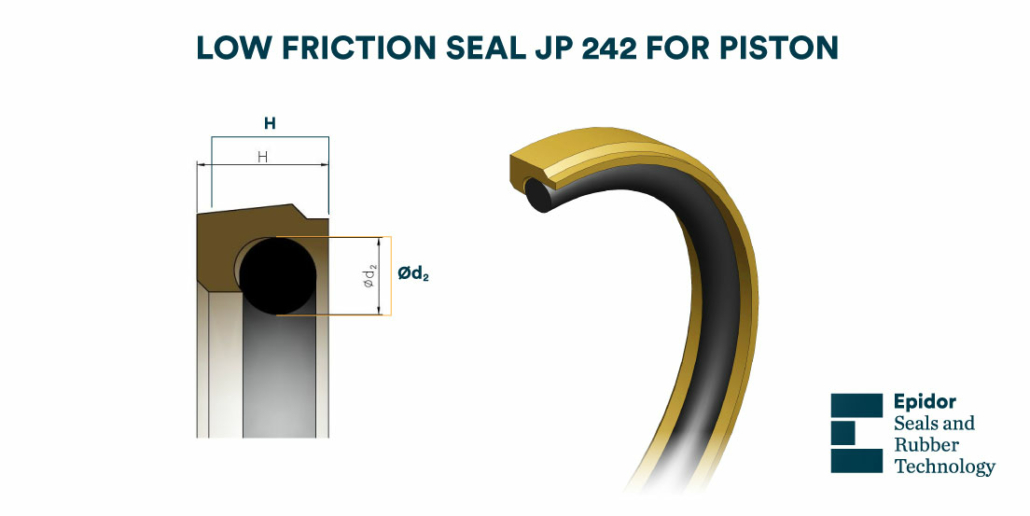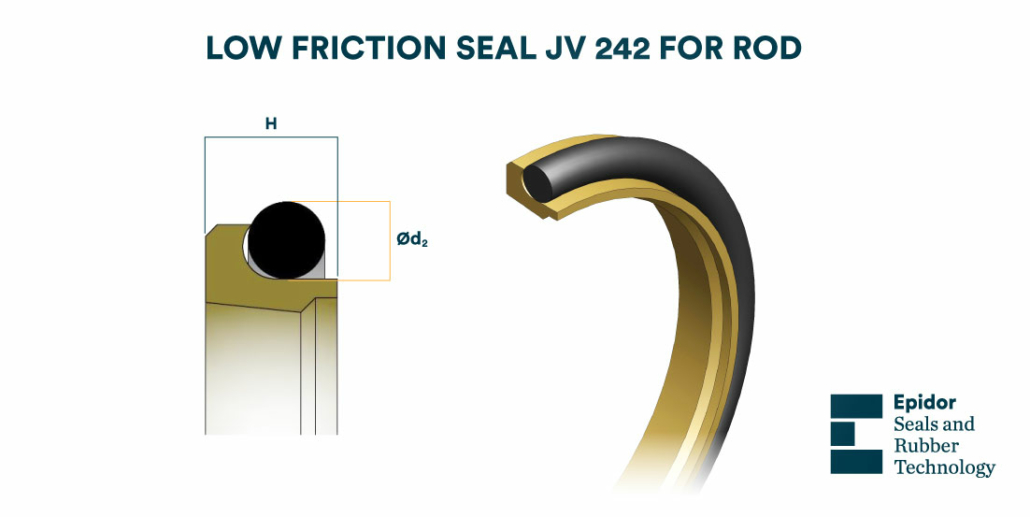Low friction seals for O-ring housings
In some cases we find that the dynamic sealing of a hydraulic cylinder or other similar dynamic application is designed to mount O-rings or, at most, “X-ring” type seals.
Sometimes these applications operate at pressures or speeds that are beyond the reasonable limit of this type of seals.
The result is that these O-rings, which work as rod or piston seals, suffer premature wear that compromises their life and/or effectiveness.
What could be the solution? Due to the higher working speed or the higher pressure or both, it would be best to replace the O-ring with a low friction seal, but the housing of a standard low friction seal does not match the one of the existing O-ring.
New low friction seals 242
The solution proposed by Epidor SRT is the new low friction seal 242, in its models for piston rod (JV 242) and piston (JP 242).
These seals are designed to replace an O-ring used for dynamic sealing and do not require any modification to the housing.
Conceptually, the O-ring is replaced by a low friction seal whose energizing O-ring is of radial section (d2 ), one size smaller than the installed one.
Since the original seal has a longer housing length than the low friction seal, it would be appropriate to add a ring that not only complements the length, but also serves as an anti-extrusion ring.
The fusion in the same piece of the low friction ring and the anti-extrusion ring leads to the new JV 242 (for piston rod) and JP 242 (for piston).

The design parameters considered by the Epidor SRT Technical Department were as follows:
- The dimensions of the energized ring that match those of the O-ring housings according to AS-568 are taken as the housing standard.
- A low-friction seal of the next size down is adapted to each housing size, respecting the inner shape of this type of seal
- Logically, the thickness of the low friction ring is modified to match the tightness of the O-ring to that of the standard low friction seal.
- In order to avoid extrusion problems, the O-ring support area has been given a curved shape, similar to that of an anti-extrusion ring.
Advantages and benefits of low-friction seals JV 242 and JP 242
The new low-friction seals offer several advantages and benefits, such as:
- Replacement of O-rings or “X-ring” type seals in high speed dynamic sealing services, high pressure or both factors at the same time.
- Maintenance of the same housing, with no additional machining costs.
Limitations of low friction seals JV 242 and JP 242
The following are the limitations of the new seals with respect to standard low-friction seals:
- The energizing O-ring has a smaller section, resulting in a slightly lower elasticity of the friction ring and O-ring assembly.
- The resulting friction ring cross-section is larger than that of the equivalent low-friction seal, which will make the sometimes already complicated assembly of a low-friction seal difficult.
Assembly of the JV 242 and JP 242
In relation to the assembly of JV 242 and JP 242 seals, if a PTFE formulation with fillers is chosen, the assembly can become more complex. For this reason, this material is recommended only for small radial sections and large diameters.
In general, the formulations to be suggested will be high hardness polyurethanes (55 Shore D or 57 Shore D) which, due to their elasticity, do not suffer from the aforementioned assembly disadvantages.
Both seals can be machined for shanks and sleeves with diameters ranging from 10 mm to 580 mm, without excluding the possibility of other diameters on request.
If you still have any doubts about the information in this blog, please contact our team of specialists.








Leave a Reply
Want to join the discussion?Feel free to contribute!